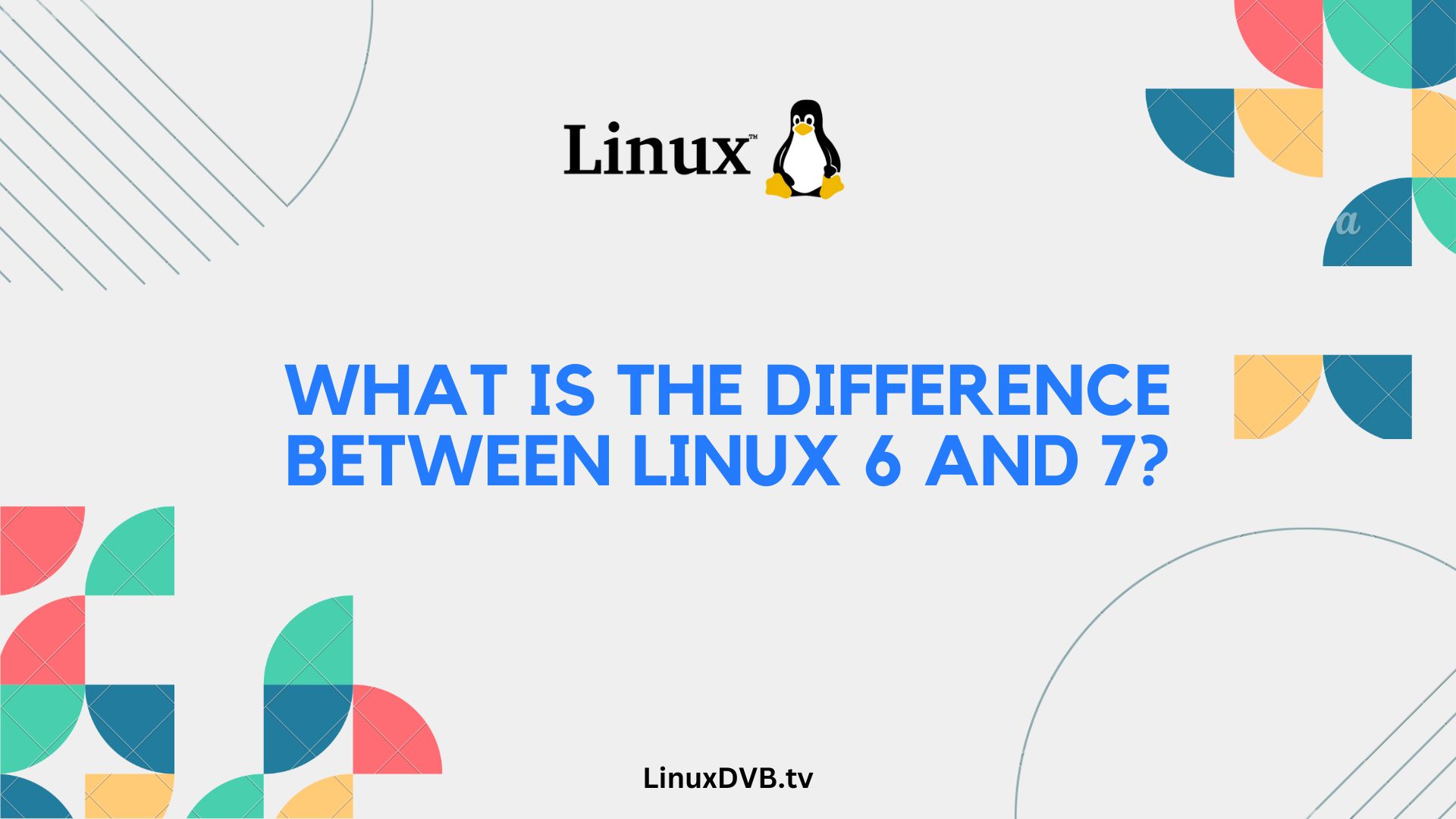Introduction
In the ever-evolving world of technology, Linux has been a steadfast presence. With each new release, this open-source operating system brings exciting changes and improvements. In this article, we will delve into the intriguing question: What is the difference between Linux 6 and 7? We’ll navigate through the key features, enhancements, and optimizations that make these two versions stand apart. Whether you’re a seasoned Linux user or just starting your journey, this article will provide valuable insights into the world of Linux.
Table of Contents
What is difference between Linux 6 and 7?
Linux 6 and Linux 7 are two significant milestones in the world of open-source operating systems. Let’s explore the distinctions between them to understand their evolution better.
The Kernel
At the heart of every Linux distribution lies the kernel. Linux 7 introduces a newer kernel version compared to Linux 6. This updated kernel comes with improved performance, security enhancements, and support for the latest hardware. While Linux 6 was no slouch in these departments, the advancements in Linux 7 take it a step further.
User Interface and Desktop Environment
One of the most noticeable differences between these two versions is the user interface and desktop environment. Linux 6 typically used an older desktop environment, while Linux 7 sports a sleeker and more modern interface. This change not only enhances the overall look but also improves user experience.
Software Package Management
Linux 7 boasts more robust software package management. With improved package managers and repositories, software installation, updates, and dependencies have become more seamless. Linux 6, although functional, may not offer the same level of convenience.
Security Features
In today’s digital landscape, security is paramount. Linux 7 places a strong emphasis on security, with enhanced features like secure boot and improved access controls. While Linux 6 had its security measures, Linux 7 takes it up a notch to protect your system effectively.
Performance and Optimization
Linux 7 is optimized for better performance on modern hardware. It utilizes resources more efficiently, resulting in faster boot times and smoother multitasking. While Linux 6 performed admirably, Linux 7’s optimizations make it a preferred choice for resource-intensive tasks.
Compatibility and Legacy Support
If you have older hardware or software that you rely on, compatibility might be a concern. Linux 6 offers better compatibility with legacy systems, ensuring that your older software and devices continue to work seamlessly. Linux 7, while excellent for modern systems, may require some adjustments for legacy support.
Community and Support
Both Linux 6 and 7 have active and supportive communities. However, as Linux 7 gains popularity, you can expect more up-to-date documentation, forums, and support channels. This can be a crucial factor when seeking assistance with any Linux-related issues.
Ecosystem and Software Availability
The Linux ecosystem is vast, with a multitude of software available for various purposes. Linux 7 benefits from a more extensive and up-to-date software repository, offering users access to the latest applications and tools. Linux 6, while still capable, may not have the same level of software availability.
Frequently Asked Questions
Can I upgrade from Linux 6 to Linux 7 easily?
Upgrading from Linux 6 to Linux 7 is possible, but it may require careful planning and backup of your data. Consult the official documentation for a smooth transition.
Which version of Linux should I choose for a server environment?
The choice between Linux 6 and 7 for a server environment depends on your specific requirements. Linux 7 offers better performance and security features, making it a preferred choice for modern servers.
Is Linux 6 still receiving updates and security patches?
While Linux 7 is the latest version, many distributions continue to provide updates and security patches for Linux 6. However, it’s essential to consider upgrading for the latest features and improvements.
Can I dual-boot Linux 6 and 7 on the same system?
Yes, it’s possible to dual-boot Linux 6 and 7 on the same system. Ensure you have enough disk space and follow a dual-boot installation guide for your distribution.
Which version of Linux is more suitable for a desktop user?
Linux 7 is generally more suitable for desktop users due to its modern interface, improved software availability, and enhanced user experience.
Are there any known compatibility issues with Linux 7?
Compatibility issues can vary depending on your hardware and software requirements. It’s advisable to check compatibility lists and forums for specific information related to your setup.
What is the difference between Linux 6 and 7?
The main differences between Linux 6 and 7 are improved performance, updated software packages, and enhanced security features.Why is RHEL7 faster than RHEL 6?
RHEL 7 is faster than RHEL 6 due to optimizations in the kernel, improved resource management, and better hardware support.What is the difference between RHEL 6 and RHEL 7 in Linux?
The key differences between RHEL 6 and RHEL 7 in Linux include updated software versions, systemd adoption, enhanced virtualization support, and improved security features.Conclusion
In the ever-evolving world of Linux, the difference between Linux 6 and 7 is striking. While Linux 6 is a reliable choice, Linux 7 introduces significant improvements in performance, security, and user experience. Your choice between these two versions should align with your specific needs, whether it’s for a server environment, desktop use, or legacy support. As Linux continues to evolve, both versions contribute to the vibrant and innovative open-source ecosystem.

